Creature Features (113)
Meet the salamanders making the South a biodiversity hotspot
Written by Southern Environmental Law CenterSkip to main co An eastern newt in its juvenile stage in Blacksburg, Virginia. Courtesy SELC.
An eastern newt in its juvenile stage in Blacksburg, Virginia. Courtesy SELC.
Salamanders are under siege in a changing world
Salamanders are extraordinary creatures. Some of these astonishing amphibians boast vibrant colors and patterns while two-thirds of all species are lungless and able to breathe through their skin. All salamanders have the remarkable ability to regrow limbs, tails, and even parts of their heart and brain, a rare ability in the animal kingdom.
More salamander species live in the Appalachians than anywhere else in the world. Fifty-four species of salamander call Virginia home.
Roughly 20 percent of the world’s salamander species can be found in the South
Unfortunately, the impacts of climate change, habitat loss and pollution pose a real danger to these sensitive creatures. Increased temperatures, changing humidity levels, wildfires and droughts wreak havoc on salamanders, which are impacted by even small changes in habitat conditions and are often specialized to small native ranges.
Southern Environmental Law Center’s work addressing climate change, fighting for clean water, and conservation efforts help protect all kinds of salamanders in the South. To celebrate the Endangered Species Act’s 50th anniversary, they are highlighting some of the endangered and threatened salamanders of our region.
 Representatives from U.S. Fish and Wildlife Service and the Tennessee Aquarium Conservation Institute work together to rescue Barrens Topminnows imperiled by an exceptional drought in Nov. 2016. Tennessee Aquarium
Representatives from U.S. Fish and Wildlife Service and the Tennessee Aquarium Conservation Institute work together to rescue Barrens Topminnows imperiled by an exceptional drought in Nov. 2016. Tennessee Aquarium
Drought conditions threaten some of the nation’s most-endangered fish species
Casey Phillips is a communications specialist at the Tennessee Aquarium in Chattanooga.
CHATTANOOGA — The endless parade of sunny, cloudless days in Chattanooga for the last two months may seem like the stuff of dreams to anyone planning an outdoor activity. However, this fall has turned into a blue-sky nightmare for aquatic species living in smaller creeks and streams.
“Some of those headwater pools are going to dry up, and we’ll lose large numbers of populations,” said Dr. Bernie Kuhajda, an aquatic conservation biologist at the Tennessee Aquarium Conservation Institute. “It just doesn’t look good for our headwater fish communities out there. They’re really getting stressed.”
Less than half an inch (0.42 inches) of rain fell in Chattanooga during a 72-day span between Aug. 30 and Nov. 9, according to meteorological data recorded at Lovell Field. That’s just 0.16 inches more than fell in Death Valley, California, during the same period, according to the National Oceanic and Atmospheric Administration (NOAA).
As of the latest weekly report by the government’s U.S. Drought Monitor, most of Hamilton County is now considered to be experiencing a D4 or “exceptional” drought, the Monitor’s most severe drought category.
Bad news for endangered fish species like the Barrens Topminnow and Laurel Dace.
50th anniversary of the Endangered Species Act
Written by Southern Environmental Law Center
For decades, the Endangered Species Act has served valuable in preserving species and making our region so unique
Dec. 28 marks the 50th anniversary of the Endangered Species Act — an important legal tool for protecting imperiled Southern species and their habitat. Since its passage in 1973, we’ve seen a nearly 99 percent success rate in preventing the loss of animals and plants protected under the law, including the iconic bald eagle and American alligator.
The Endangered Species Act establishes protections for fish, wildlife and plants that are listed as threatened or endangered; provides for adding species to and removing them from the list of threatened and endangered species, and for preparing and implementing plans for their recovery; provides for interagency cooperation to avoid take of listed species and for issuing permits for otherwise prohibited activities; provides for cooperation with States, including authorization of financial assistance; and implements the provisions of the Convention on International Trade in Endangered Species of Wild Flora and Fauna.
This bedrock environmental law reminds us there is still more work to do to protect the South’s rich biodiversity — including fighting in court to save at-risk species, advocating for more protective regulations, and defending the Endangered Species Act.
Study expounds upon evolution of mosquitoes and their hosts

This story was originally published on Phys.org and authored by Mick Kulikowski, Director of Strategic Communications and Media Relations at NC State University
Raleigh, NC — Researchers at North Carolina State University and global collaborators have mapped the mosquito’s tree of life, a major step toward understanding important traits, such as how the insects choose their hosts, feed on blood and spread disease. The findings will help researchers make better predictions to model disease transmission and understand what makes some mosquitoes better disease carriers than others.
The research suggests mosquito evolution over the past 200 million years mirrors the Earth’s history of shifting land masses and changing host organisms, said Dr. Brian Wiegmann, William Neal Reynolds Professor of Entomology at NC State and corresponding author of a paper describing the mosquito family tree.
The William Neal Reynolds Professorship is one of the highest distinctions available to NCSU faculty members.The Reynolds Professorships were established in 1950 by William Neal Reynolds, a long-time president and board chairman of the R.J. Reynolds Tobacco Company, to recognize and support outstanding faculty achievement in research, teaching and extension.
“This ongoing project builds a big-data resource that mines the academic literature with published observations of the sources of blood mosquitoes drink, from animals as diverse as fish to humans,” Wiegmann said. “It focuses explicitly on data collection to infer aspects of mosquito biology in a contextualized way. That means linking up the family, or phylogenetic, tree with the narrative of life on Earth: geologic history, climate history and organism history.”
 Oct. 24 - 31, everybody is encouraged to learn about bats and get involved in their conservation. National Park Service
Oct. 24 - 31, everybody is encouraged to learn about bats and get involved in their conservation. National Park Service
An excellent time to celebrate bats
ASHEVILLE — Last year, the public was invited to “Bats N Brews” in honor of Bat Week at Sierra Nevada Brewing Company. This year we have not heard yet of any event to celebrate bat week in the southern Appalachians. Who will step up this year? Please let us know of any related activities. Or at least celebrate with family and friends. This article includes great recipes, too.
Bat Week is an international, annual celebration designed to raise awareness about the need for bat conservation. Bats are vital to the health of our natural world and economy. Although we may not always see them, bats are hard at work all around the world each night — eating tons of insects, pollinating flowers, and spreading seeds that grow new plants and trees.
Tennessee Project Milkweed orders top 300,000 and exhaust the free supply. TDOT says there’s more to come.
Written by Hellbender Press Monarch butterfly feeding off milkweed. TDOT launched a program to promote milkweed production, a common source of food for butterflies, birds and other insects.
Monarch butterfly feeding off milkweed. TDOT launched a program to promote milkweed production, a common source of food for butterflies, birds and other insects.
Free milkweed seed will help citizens restore landscapes and preserve habitat; orders commence again in June for popular TDOT project
NASHVILLE — Amid unprecedented citizen demand, the Tennessee Department of Transportation (TDOT) halted online orders for free milkweed seed, offered as part of its Project Milkweed. Launched in June 2023, this mail-order resource was aimed at restoring landscapes and preserving habitats for monarch butterflies and other pollinator species. Since June, TDOT has taken nearly 131,000 individual orders from Tennesseans for milkweed seed. In total, 779,601 red and common milkweed seed packets were requested. The program will return in June 2024.
“TDOT is happy to offer such a popular program to the public, and to empower Tennesseans to do their part in saving pollinators as they are vital to life, growing food, and the economy of Tennessee,” said TDOT Commissioner Butch Eley in a release.
Orders exhausted a stock of 300,000 milkweed seed packets by Sept. 30. Additional seed material has been ordered and is expected to arrive in October. All remaining orders will be fulfilled then, according to TDOT.
Rangers pry bear cub from pet food container
Written by Matthew Cameron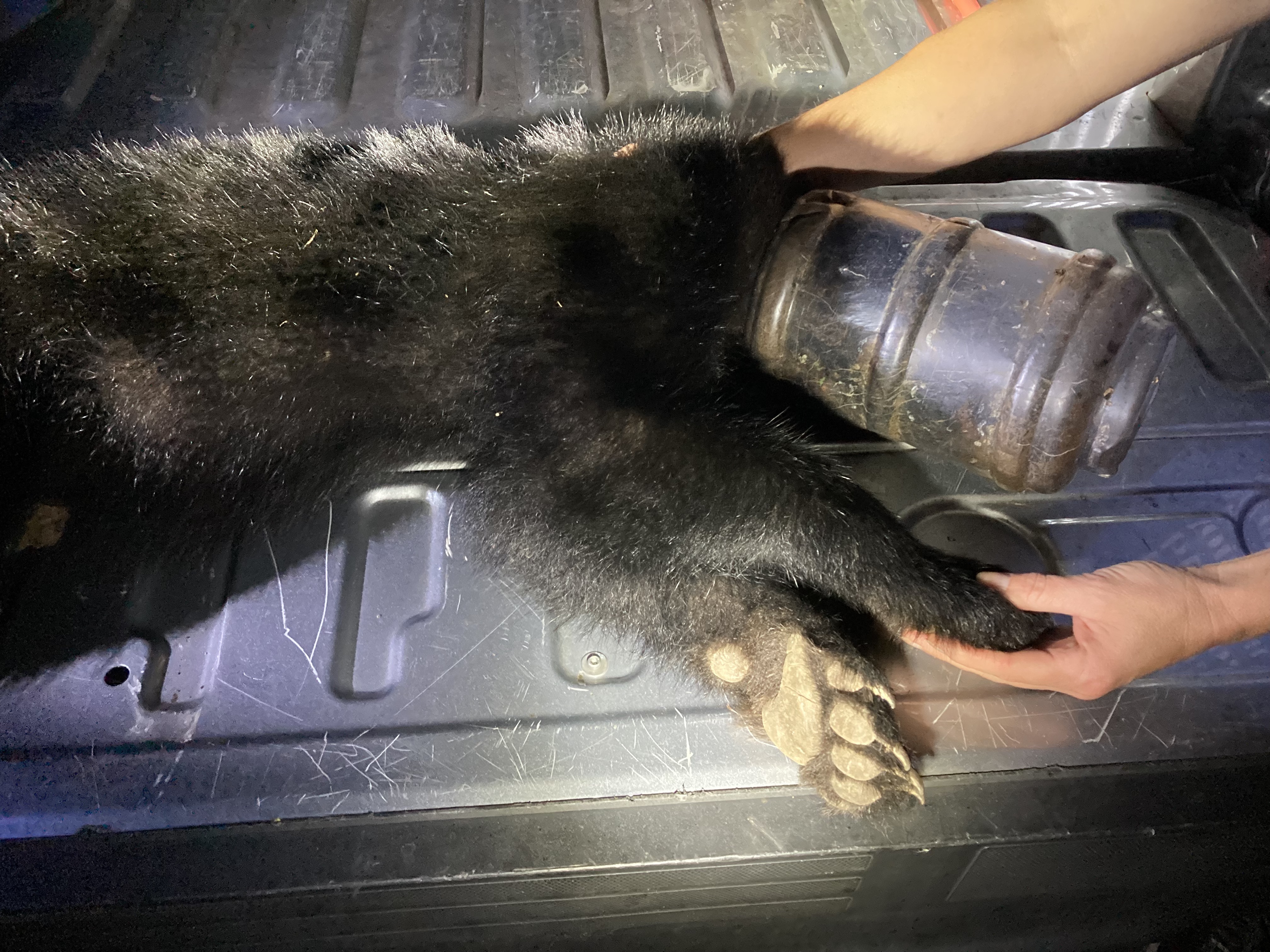 TWRA is stressing the importance of being BearWise after removing a plastic pet feeder from a bear cub’s head this week in Blount County. Tennessee Wildlife Resources Agency
TWRA is stressing the importance of being BearWise after removing a plastic pet feeder from a bear cub’s head this week in Blount County. Tennessee Wildlife Resources Agency
Wildlife agency advises people to be bear aware
Matthew Cameron is a wildlife information specialist at Tennessee Wildlife Resources Agency.
MARYVILLE — Tennessee Wildlife Resources Agency is stressing the importance of being BearWise after recently removing a plastic pet feeder from a bear cub’s head. TWRA Black Bear Support Biologist Janelle Musser responded and promptly began a trapping effort. She was able to lure the cub into a trap, but was unable to trigger it with its mouth due to the container on its head. She moved the trap each time a new sighting was reported, even trying different style traps but the mother became trap shy and difficult to pattern.
SELC settlement protects blue-blood horseshoe crabs and their avian dependents
 Red Knot.
Red Knot. Chuck Homler
CHARLESTON — A landmark settlement prohibits horseshoe crab collection on the beaches of more than 30 islands along the South Carolina coast that are established feeding sites for rufa red knots during their annual migration — as well as any harvesting in Cape Romain National Wildlife Refuge — for at least five years.
Every spring, red knots time their 9,300-mile migration from South America to the Canadian Arctic perfectly so they stop on the same beaches of South Carolina at the exact moment horseshoe crabs begin to spawn.
These protein-rich crab eggs are critical for red knots, providing the fuel they need to complete their transpolar journey. This delicate relationship between horseshoe crabs and red knots has developed over millions of years.
Butterfly release scratched at UT Arboretum festival after pushback on ecological wisdom
Written by Thomas Fraser Come join the fun at the annual UT Arboretum Society Butterfly Festival from 10 a.m to 1 p.m on September 9 at the UT Forest Resources AgResearch and Education Center and Arboretum. The event will include educational activities about protecting these pollinators. Photo courtesy University of Tennessee Institute of Agriculture
Come join the fun at the annual UT Arboretum Society Butterfly Festival from 10 a.m to 1 p.m on September 9 at the UT Forest Resources AgResearch and Education Center and Arboretum. The event will include educational activities about protecting these pollinators. Photo courtesy University of Tennessee Institute of Agriculture
UT grounds planned butterfly release but festival will fly
OAK RIDGE — The University of Tennessee Arboretum canceled a planned release of painted butterflies originally scheduled for its upcoming annual butterfly festival, but the pollinator-positive educational event will go on to the joy of families and nature enthusiasts across East Tennessee.
“While the fun-filled and educational event is still scheduled for Sept. 9, a mass release of painted lady butterflies is no longer scheduled as part of the event,” according to the UT Arboretum Society.
The 8th annual festival will occur from 10 a.m. to 1 p.m. at the UT Forest Resources AgResearch and Education Center and Arboretum, 901 S. Illinois Avenue, Oak Ridge. Plenty of activities will provide educational opportunities for the public to learn how we can all protect our pollinators, according to the UT Institute of Agriculture.
“The butterfly species previously planned for release at the festival was the painted lady, Vanessa carduii. Butterfly releases have been held at past festivals with the intention that the more people understand an organism, the more they are inspired to help protect it. Though there has not been definitive scientific research about the impact of painted lady butterfly releases, the UT Arboretum Society has decided to join many other scientific organizations, such as the North American Butterfly Association and the Smithsonian Institute, in not promoting this practice,” according to a release.
- ut arboretum
- tennessee naturscapes
- north american butterfly association
- ut arboretum society
- butterfly festival
- painted butterfly
- ut institute of agriculture
- oak ridge arboretum
- butterfly
- ut butterfly festival
- butterfly release bad
- nature for kids
- things to do around knoxville september 9
- teach kids about nature knoxville
- vanessa carduii
- donna edwards
- stephen lyn bales
- laura russo
 Cynthia Maples, the head beekeeper at Zoo Knoxville, checks out her buzzing charges. JJ Stambaugh
Cynthia Maples, the head beekeeper at Zoo Knoxville, checks out her buzzing charges. JJ Stambaugh
With no clear cause, after two decades beekeepers across North America report losing up to 90 percent of their hives.
Although the alarming losses of the 2006-7 season have not repeated, since then, experts consistently track higher than normal winter losses among honeybee colonies, according to the U.S. Environmental Protection Agency (EPA).
A survey by the University of Maryland University of Maryland found 40% of US honeybee colonies died between April 2018 and April 2019.
While most Americans associate the insects with one of humankind’s oldest sweet treats - honey - they might not realize honeybees are actually an invasive species that can end up competing for resources with indigenous “pollinators” such as bumblebees.
“Worldwide, there are over 20,000 species of bees,” said Cynthia Maples, the lead beekeeper and apiarist at Zoo Knoxville. “About 265 of those are bumble bees. In North America, there are 46 bumblebee species. In the southeast, we have about 15 bumble species with at least six of those in decline.”
Maples explained all bees are part of the order Hymenoptera, which also includes ants and wasps.
“Native pollinators would classify as those species naturally occurring in a particular area, not introduced. Honeybees are technically an invasive species to North America. They were brought over from Europe by humans,” she said.
“In the past few years the narrative has made a switch from keeping honeybees to help native pollinators to the realization that honeybees may be stealing resources from native pollinators,” she continued. “Honeybees are still very important as agricultural pollinators, but protecting native pollinators is also very important.”
While Maples doesn’t know if local bee populations are on the ropes, she said the Xerces Society for Invertebrate Conservation (an international nonprofit group) has formed regional “community science groups” as part of a widespread effort to track bumblebee species.
“It’s really hard to say specifically if there has been a decline in local insect populations since insects are very difficult to track,” she said. “I took part in the training for the southeast bumble bee atlas earlier this year. The hope is that this atlas will give scientists a better idea of population numbers.”
It’s important that scientists understand any threats to the health of the world’s bee populations as the insects are vital to humankind’s ability to survive.
Bees — both domesticated and wild — are responsible for pollinating 71 of the 100 crop species that provide 90 percent of the global food supply, according to experts from greentumble.
Without bees, for instance, there would be no apples, avocados, onions, cucumbers, oranges or almonds.
“Pollination is defined as the act of transferring pollen grains from the male anther of a flower to the female stigma,” Maples explained. “When bees go from flower to flower collecting pollen, they are also depositing pollen grains onto the flowers, thus pollinating them. Not all plants rely on insects to reproduce; for example, some are wind pollinated.”
“The bees benefit because nectar and pollen are their food source. Nectar is an energy source and pollen is a protein source for them. Many agricultural plants are pollinated by bees, hence their importance for us. Roughly one in three bites of food are pollinated by bees, plus another 25 percent of animal feed stuffs. Almonds are 100 percent honeybee pollinated.”
It’s not entirely clear why bee populations appear to be shrinking, but Maples said there’s no shortage of possible explanations.
“As with many species in decline, there are a number of reasons behind it,” she said. “Habitat loss is a big one. Our culture has taught us that we should have pristine lawns without ‘weeds,’ but letting your yard — even in part — grow wild would be a huge step in creating more resources for pollinators. Dandelions and clover can be a haven for pollinators.”
Poisons used to control unwanted animals and insects are another factor.
“Pesticides have a huge impact as well, especially though containing neonicotinoids,” she said. “Pesticides rarely distinguish between beneficial invertebrates and those that cause harm.”
This summer’s historic heatwaves in the Northern Hemisphere may also be playing a role, but Maples cautioned that it’s too early to know for certain what the impact is.
“Climate change may also be playing a role,” she explained. “It isn’t clear if bumblebees are adapting to changing temperatures within their normal ranges.”
Those interested in helping researchers to track bee populations can go to Xerces and learn about taking part in one of the organization’s community science groups.
Do bees really have knees? And more on the idiom.
Officials mull farm runoff as possible cause
NEWPORT — Tennessee state conservation, agricultural and environment officials are investigating a widespread fish kill along the lower Pigeon River.
The probe began on Aug. 12 after Tennessee Wildlife Resource Agency officers noticed multiple species of dead fish along the river near Newport.
Aquatic life in the Pigeon River, a popular rafting, kayaking and fishing spot boasting big smallmouth bass, has steadily recovered following years of pollution from the upstream paper mill in Canton. The Pactiv Evergreen site permanently closed earlier this year, after it and previous owners drastically reduced the amount of effluent into the river. Fishing and whitewater sports rapidly took off from there.
TWRA didn’t immediately identify the reason for the fish kill, which remains under investigation, but alluded to sediment and agricultural runoff that spiked during heavy rains this month.
Here is the full news release from TWRA:
“The Tennessee Wildlife Resources Agency (TWRA) and the Tennessee Dept. of Environment and Conservation (TDEC) are jointly investigating a fish kill on the Pigeon River above Newport.
“On Friday, TWRA wildlife officers reported dead fish on the Pigeon River from Edwina Bridge down to the Newport police station. TWRA fisheries biologists responded to the area documenting multiple species of dead fish at several locations. Based on the dispersal of the fish, recent water generation from the dam likely pushed them further downstream while leaving higher numbers of dead fish at the top of the kill zone.
“To determine potential contributing factors, biologists investigated the surrounding area and documented muddy runoff from agriculture fields likely caused by heavy rains in the area.
“TWRA biologists contacted the TDEC field office in Knoxville to assist with the incident and notified the Tennessee Department of Agriculture of the investigation.
The incident currently remains under investigation.”
Virginia Tech sleuths are investigating mysterious hellbender disappearances
Written by Mike Allen Virginia Tech Professor Bill Hopkins preparing to gently return a hellbender to its underwater home in a Virginia stream after taking measurements. Lara Hopkins/Virginia Tech
Virginia Tech Professor Bill Hopkins preparing to gently return a hellbender to its underwater home in a Virginia stream after taking measurements. Lara Hopkins/Virginia Tech
One clue: They eat their own in deforested stream corridors
Mike Allen is a media relations officer for Virginia Tech.
BLACKSBURG — The gigantic salamanders known as hellbenders, once the apex predators of many freshwater streams, have been in decline for decades, their population constantly shrinking. No one knew why. William Hopkins, professor in the Department of Fish and Wildlife Conservation and director of the Global Change Center at Virginia Tech, suspected the hellbenders’ plight had connections with environmental changes engineered by humans.
Hellbender males select nesting sites on stream bottoms and guard the eggs laid there by females — and occasionally the salamander dads snack on the eggs, consuming them before they ever get to hatch. A study that Hopkins led, conducted through eight years of snorkeling in ice-cold Southwest Virginia streams and published in The American Naturalist, determined that in deforested areas, hellbender fathers are far more likely to eat their entire brood than in areas that still have lush foliage.
This behavior, known as filial cannibalism, probably evolved as a survival tactic for enduring harsh conditions. Prior to Hopkins’ results, scientists were not aware that hellbenders’ filial cannibalism drastically increased in cleared lands, actively speeding the species out of existence.
Opposition mounts to Pisgah/Nantahala national forest management plans
ASHEVILLE — An alliance of conservation groups notified the U.S. Forest Service of its intent to sue the federal department unless officials fix what it calls glaring deficiencies in the Nantahala-Pisgah Forest Plan.
Potential plaintiffs allege the Forest Service’s management plan for the Nantahala and Pisgah national forests is flawed. They maintain the Forest Service plan favors commercial logging, ignores the best science available, and puts several endangered bat species at risk of extinction.
The endangered species potentially affected are the northern long-eared bat, Indiana bat, Virginia big-eared bat, and the gray bat. Two species that are being considered for the endangered species list — the little brown bat and the tricolored bat — would also be adversely affected.
MountainTrue, its lawyers at the Southern Environmental Law Center, and coalition partners — the Sierra Club, The Wilderness Society, Defenders of Wildlife, and Center for Biological Diversity — sent a 60-day Notice of Intent to Sue (NOI), which is a prerequisite to filing a lawsuit under the Endangered Species Act. The letter alleges the Forest Service relied on inaccurate and incomplete information during the planning process, resulting in a plan that imperils endangered wildlife.
Green floater mussels are somewhat safe here but not elsewhere
Written by Thomas Fraser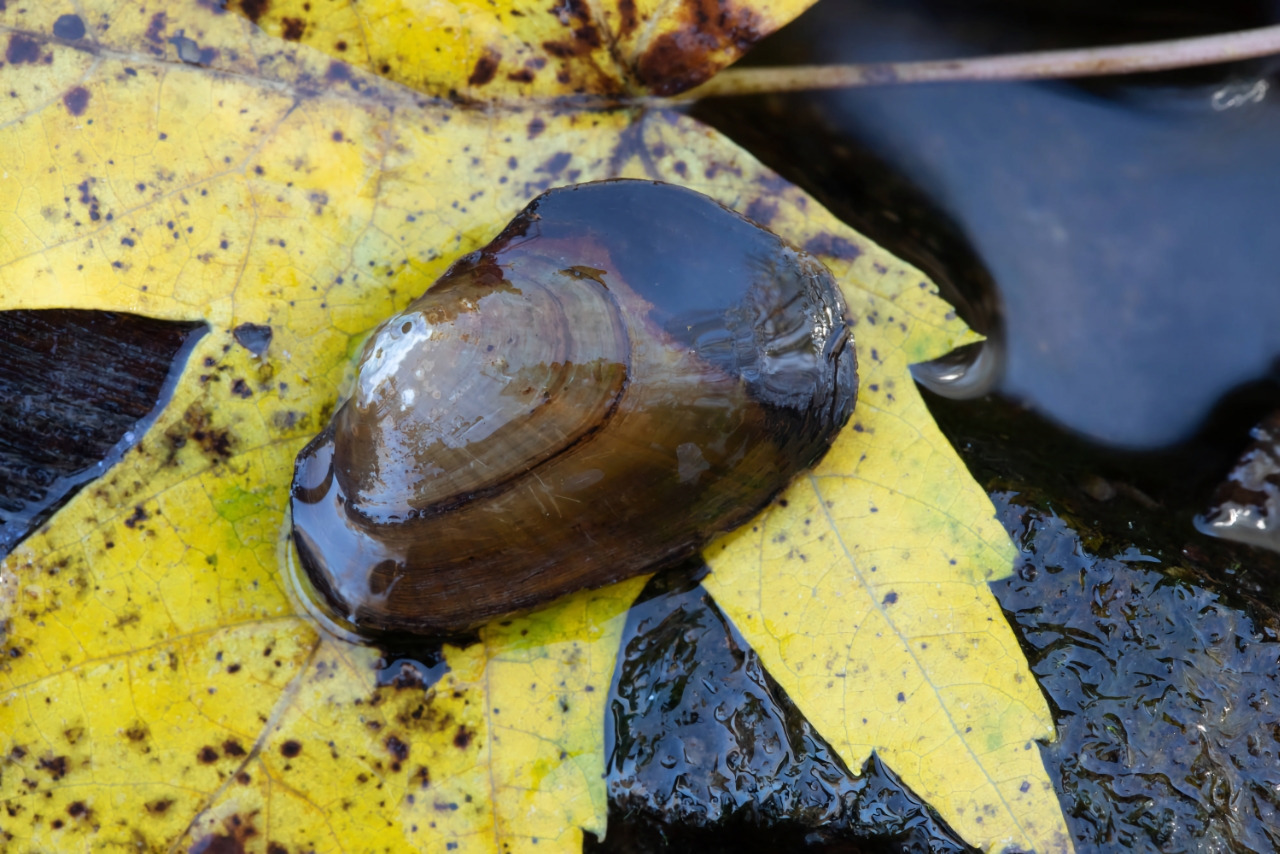 A green floater mussel (Lasmigona subviridis). Ryan Hagerty/USFWS
A green floater mussel (Lasmigona subviridis). Ryan Hagerty/USFWS
WASHINGTON — The green floater, a freshwater mussel native to the waters of Southern Appalachia, is now formally considered at risk of extinction due to the loss and fragmentation of its aquatic habitat.
The U.S. Fish and Wildlife Service determined the green floater, historically found in 10 eastern U.S. states, is likely to become endangered due to existing and emerging threats. The service is proposing to list the mussel as threatened under the Endangered Species Act.
The green floater is still found in its native range in North Carolina, Tennessee, Virginia and West Virginia. It is considered locally extinct in Alabama and Georgia.
While the species has strongholds in places, green floaters are rare in nearly 80 percent of the watersheds where they naturally occur. More than 75 percent of the nation’s native freshwater mussel species are endangered or threatened, considered to be of special conservation concern, or presumed extinct, according to USWFS.
ORNL researchers develop wildlife crossing guards
Written by Stephanie G. Seay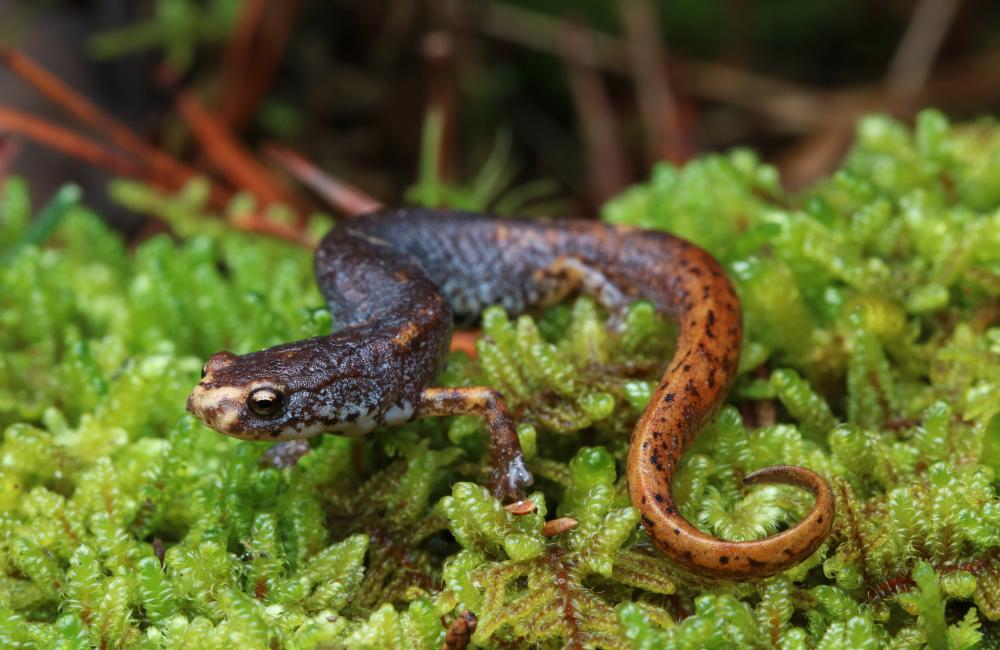 Four-toed salamanders were among the animals included in ORNL research to limit roadkill on the reservation and elsewhere. Bryce Wade/ORNL
Four-toed salamanders were among the animals included in ORNL research to limit roadkill on the reservation and elsewhere. Bryce Wade/ORNL
The 32,000-acre reservation serves as a vast laboratory for wildlife-protection efforts
Stephanie Seay is a senior science writer and communications specialist in the ORNL Communications Division.
OAK RIDGE — Oak Ridge National Laboratory researchers developed a model framework that identifies ways to ensure wildlife can safely navigate their habitats while not unduly affecting infrastructure.
The project centered on the 32,000-acre Oak Ridge Reservation in Tennessee, home to Department of Energy facilities and several at-risk species like the four-toed salamander.
Scientists identified habitats and simulated solutions like conservation buffers and open-bottom culverts to allow safe passage for salamanders and other wildlife, which cost far less than large-scale barrier removal and similarly boost ecological connectivity.
“Development and environmental sustainability don’t have to be at odds,” said ORNL’s Evin Carter. “Our collaborative approach with project managers and engineers shows wildlife management can be an integral part of land-use planning without introducing undue cost or delays.”
ORNL doctoral student Bryce Wade said the model also benefited from 30 years of high-resolution data available because of the reservation’s history and management as a National Environmental Research Park.
More...
Orianne Society shakes, rattles and rolls to preserve precious Southeastern snakes
Written by Ray Zimmerman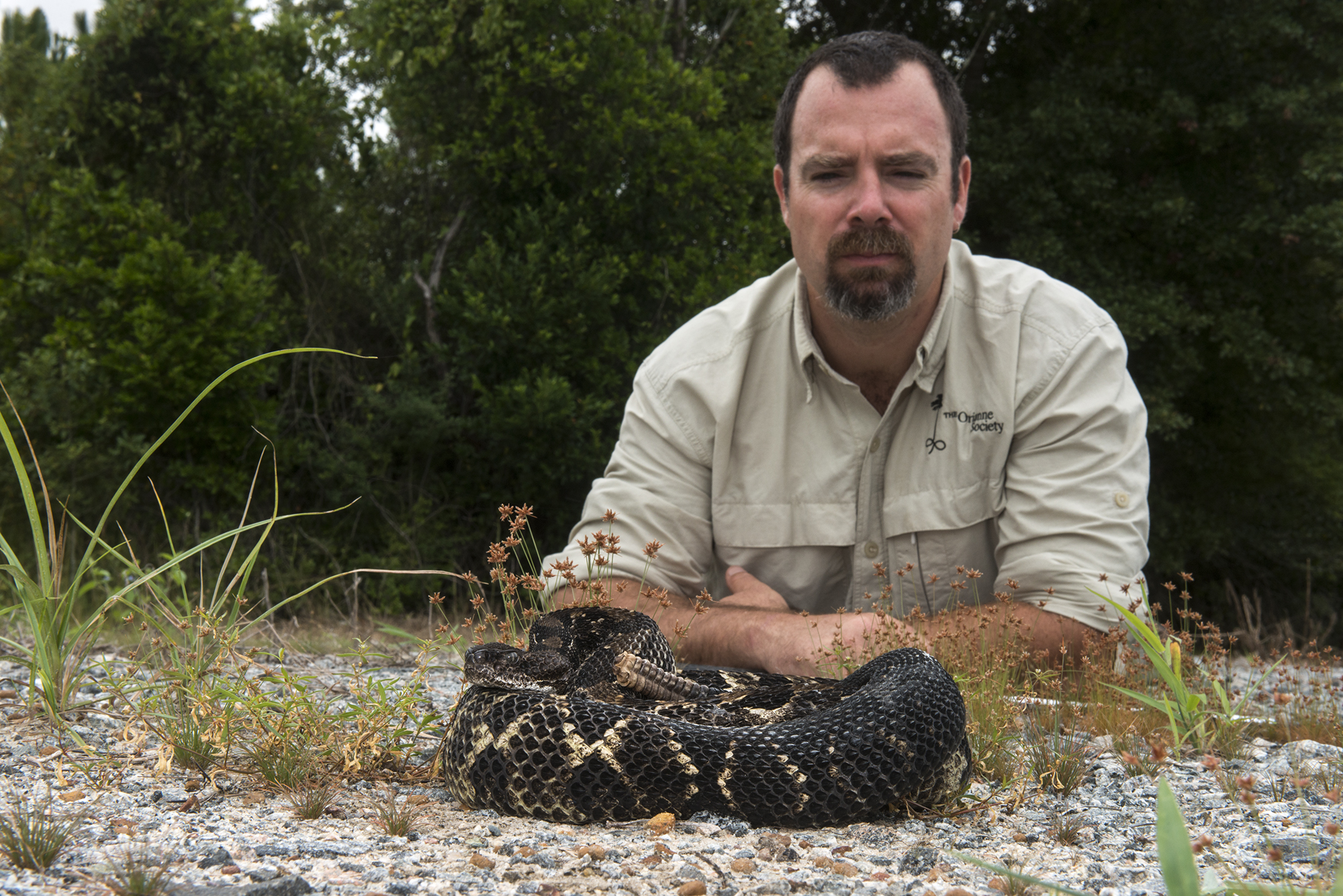 Chris Jenkins researches timber rattlesnakes like the one seen here. Courtesy Orianne Society
Chris Jenkins researches timber rattlesnakes like the one seen here. Courtesy Orianne Society
New film highlights importance of rattlesnakes to the Southern Appalachian environment
Timber rattlesnakes have been demonized for centuries, perhaps to the extent humans are incapable of understanding the snake’s importance to the world.
The Orianne Society determined the apex predator is of vital importance to the Appalachian region, yet the snake is facing tremendous challenges to its survival.
The film “Rattled: Conserving Rattlesnakes in Appalachia — A Conservation Documentary.” introduced those sentiments when it premiered in Atlanta and other locations in Georgia and North Carolina.
Researcher Dr. Chris Jenkins, CEO of the Orianne Society, is behind the story for the film.
Jenkins said timber rattlesnakes are declining across their range from Maine to Texas. Wildlife biologists attribute the decline to “low recruitment,” meaning reproductive rates that fail to replace their population.
A female rattlesnake may live 50 years, though most live only to 30 or 40. Maturity usually requires 10 years, and snakes may only produce young every other year. The broods are small and the mortality rate is high among young snakes. Rattlesnakes that encounter humans are often killed, leaving no successors.
- timber rattlesnake
- tennessee snake
- are there rattlesnakes in the southeast?
- orianne society
- chris jenkins
- rattled: conserving rattlesnakes in appalachia – a conservation documentary
- chattooga river
- cottonmouth snake
- wildlife conservation society
- pit viper
- snake fungal disease
- crotalus horridus
- indigo snake
- population dynamic
- copperhead
- venomous snake
- snake in my yard
- avoid snake bite
- gopher tortoise
- longleaf pine forest
- keystone species
- hibernaculum
How a study of so-called “trash birds” revealed conservation clues for urban species
Written by Rebecca Heisman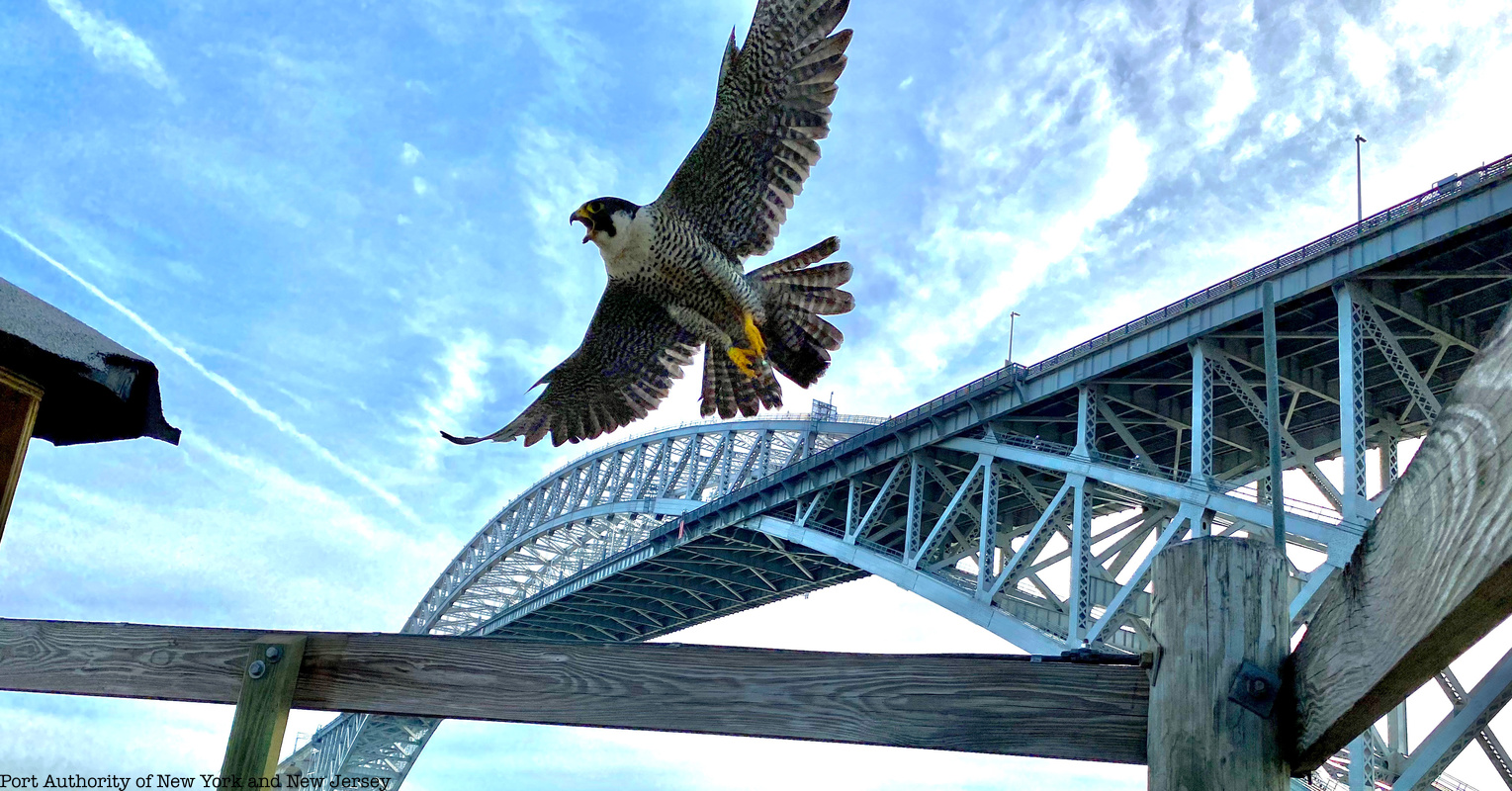 The Port Authority of New York and New Jersey documented a family of peregrine falcons on the Bayonne Bridge. Port Authority
The Port Authority of New York and New Jersey documented a family of peregrine falcons on the Bayonne Bridge. Port Authority
What city birds around the world have in common
This story was originally published by The Revelator.
Why do some bird species seem to flourish alongside humans, eating our crumbs and nesting in our backyards, while others prefer to live as far as possible from dense human populations?
Monte Neate-Clegg began to ponder the question while attending the American Ornithological Society’s 2019 conference in Anchorage, Alaska. “I was staying at an AirBnB and two of the birds I wanted to see in Anchorage, white-winged crossbills and boreal chickadees, were just in the yard,” said Neate-Clegg, at the time a Ph.D. student at the University of Utah. Although new and beautiful to him, the species are common in Anchorage and so omnipresent they’re typically ignored by residents.
“I started thinking, what is it that makes these ‘trash birds’ here, and not elsewhere?”
Neate-Clegg sounds sheepish about using the pejorative-sounding term “trash bird,” but it’s a phrase commonly used by birdwatchers to refer to species ubiquitous to a given location they cease to become interesting and can become irritating. Classic examples include pigeons in city centers and snack-stealing gulls on beaches.
One man’s trash bird is another’s research query. Neate-Clegg wondered if specific traits make certain species more able to thrive in cities around the world. After joining ornithologist Morgan Tingley at his lab at UCLA as a postdoctoral researcher in 2021, he proposed a lab-wide project in an attempt to answer the question.
The research drew on data providing clues which may eventually reveal a roadmap making our cities more bird friendly.
- monte neateclegg
- american ornithological society
- boreal chickadee
- whitewinged crossbill
- morgan tingley
- rebecca heisman
- peregrine falcons nyc
- urban bird
- avonet
- morphology
- functional trait
- ecology
- bird specimen
- ornithology
- natural history
- museum
- trash bird
- big data science
- urban biodiversity
- threatened species
- concrete jungle
- city rewilding
- urban microrewilding
- city bird
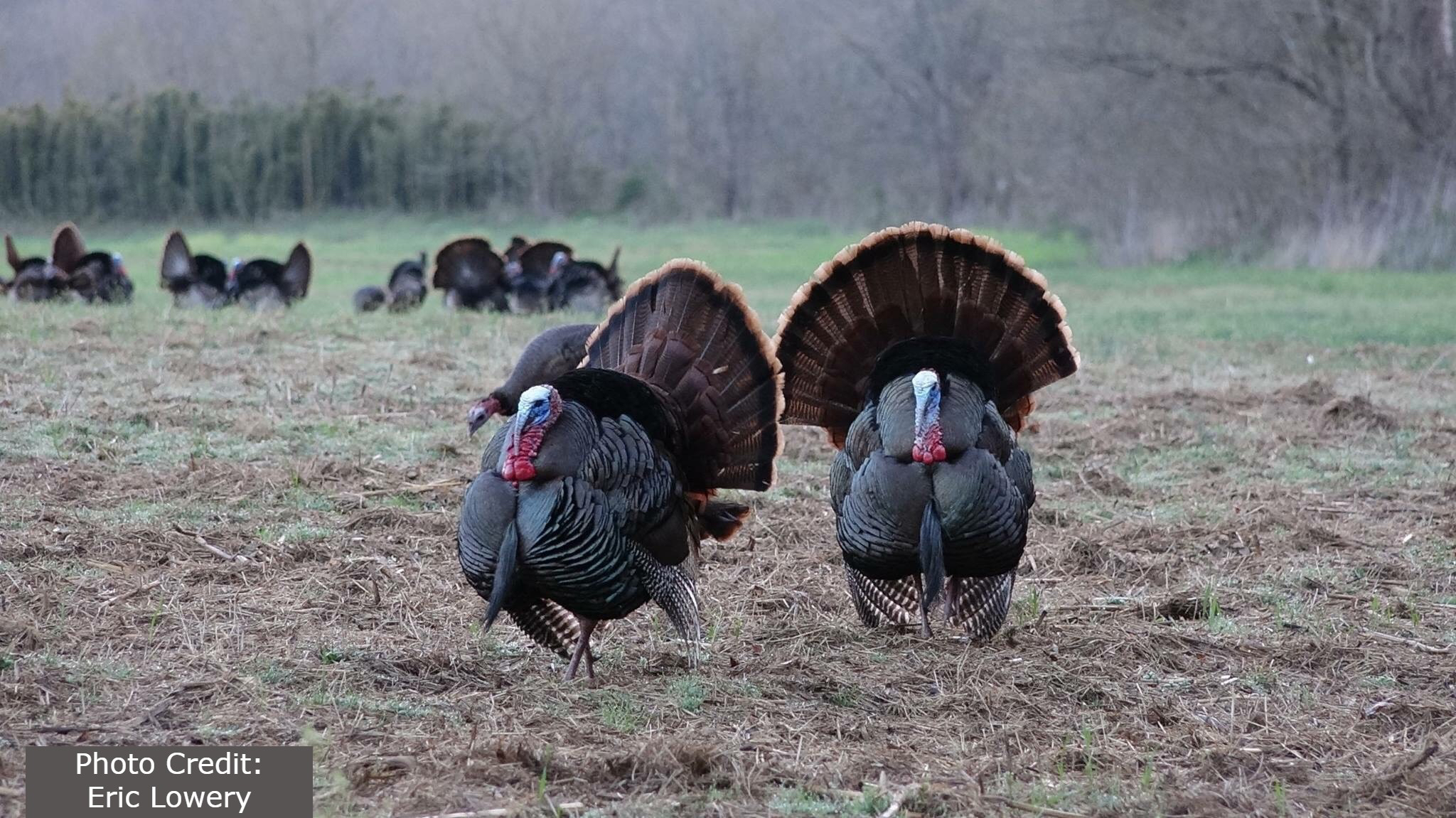 American wild turkey populations have recovered from historic lows. TWRA still needs help managing the modern populations. Courtesy Eric Lowery via Tennessee Wildlife Resources Agency
American wild turkey populations have recovered from historic lows. TWRA still needs help managing the modern populations. Courtesy Eric Lowery via Tennessee Wildlife Resources Agency
TWRA wants you to help build research on USA’s second bird
NASHVILLE — Benjamin Franklin only joked (we think) about making the wild turkey the national bird, but this summer you can help Tennessee with research on the turkey’s national history and renaissance.
Turkeys and bald eagles both grace the state and Southeast and have a notably parallel history of climbing from dire straits nationwide.
The bald eagle became the national symbol on the U.S. seal in 1782.
Declaration of Independence signer Franklin said he would have preferred a different bird. While he may have been joking, he never lobbied for it publicly. His comments in a letter to his daughter, Sarah, have become infamous.
“For my own part I wish the bald eagle had not been chosen as the representative of our country. He is a bird of bad moral character. He does not get his living honestly. You may have seen him perched on some dead tree, where, too lazy to fish for himself, he watches the labour of the fishing hawk; and when that diligent bird has at length taken a fish, and is bearing it to his nest for the support of his mate and young ones, the bald eagle pursues him, and takes it from him … the turkey is in comparison a much more respectable bird, and withal a true original native of America.”
- twra
- twra turkey
- wild turkeys in tennessee
- wild turkeys rebound
- wild turkey survey
- wild turkey rebound
- wild turkey ben franklin
- ben franklin
- bald eagle
- national bird of us
- tennesse wildlife resources agency
- national bird
- wild turkey population
- bald eagle population
- bald eagle history
- wild turkey history
- stephen bales
- thomas fraser
- ben pounds
Tennessee Aquarium wants to up the pollination game
Written by Casey Phillips Pollinator Pathway signs on the Tennessee Aquarium Plaza in Chattanooga lead guests on a self-guided tour highlighting native plants, pollinator behaviors, and unusual pollinators. Courtesy Tennessee Aquarium
Pollinator Pathway signs on the Tennessee Aquarium Plaza in Chattanooga lead guests on a self-guided tour highlighting native plants, pollinator behaviors, and unusual pollinators. Courtesy Tennessee Aquarium
TDOT joins with Tennessee Aquarium to pollinate our pathways
CHATTANOOGA — With their distinctive orange and black patterns, gossamer wings and harrowing 3,000-mile migrations, few insects are as charismatic or beloved as the monarch butterfly.
Just imagine how tragic it would be if they disappeared.
So it was with alarm in 2022 that the world received news that the International Union for Conservation of Nature (IUCN) had declared the monarch an endangered species, citing population numbers that had fallen 80 percent since the 1980s.
Similar anxiety met reports in the mid-2000s of colony collapse disorder. This sudden phenomenon dramatically imperiled the survival of European honey bees, whose activity directly or indirectly affects roughly one of every three bites of food we eat, according to the U.S. Department of Agriculture.
Pollinators are undoubtedly critically important to plants and humans alike, whether they’re investigating our Irises, calling on our Columbine, or buzzing our Blueberry bushes. This week, June 19-25, the world celebrates Pollinator Week, which recognizes the wondrous, vital contributions of butterflies, bees, moths, bats, and other pollinators.
